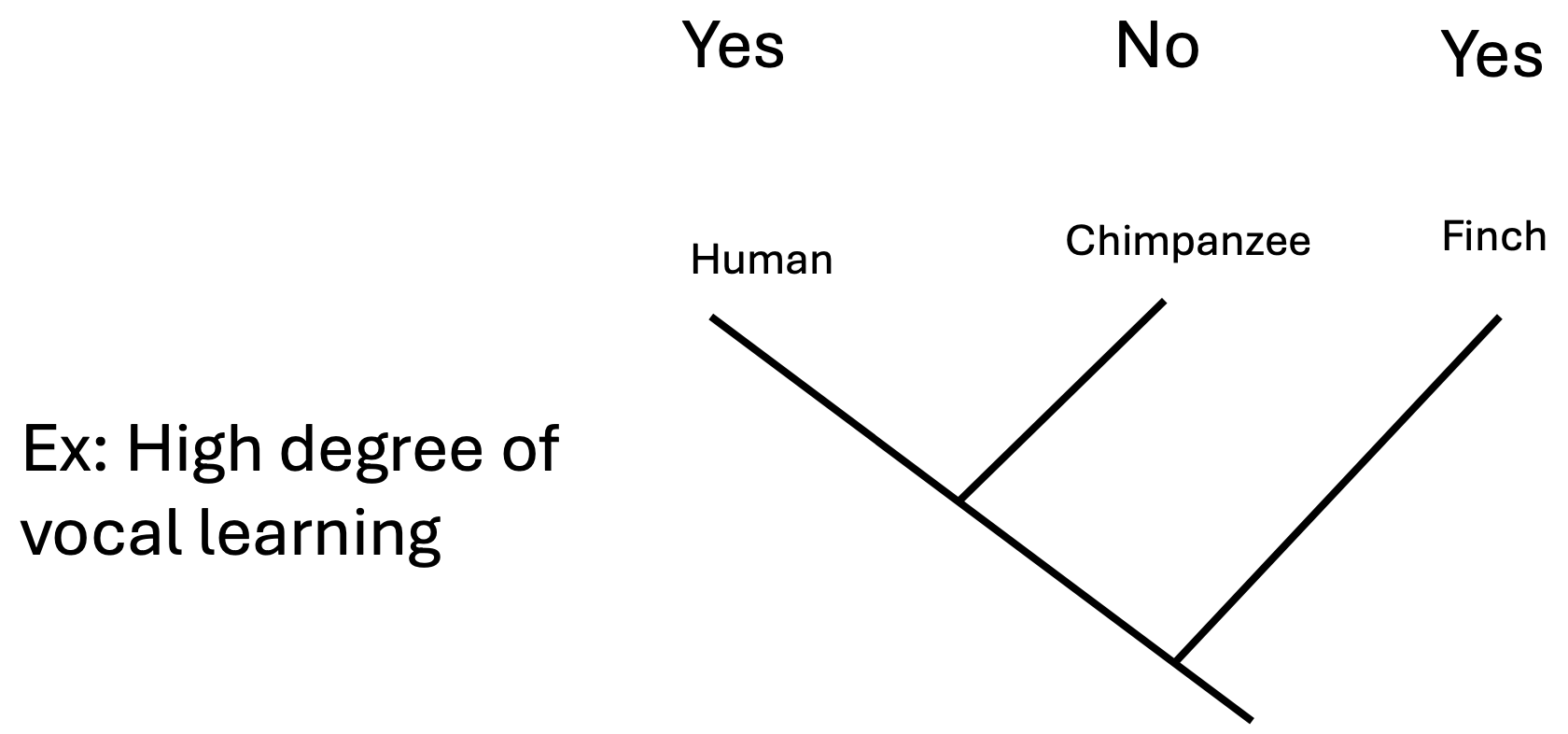Lesson 6 - Phylogeny
1/19
There's no tags or description
Looks like no tags are added yet.
Name | Mastery | Learn | Test | Matching | Spaced |
|---|
No study sessions yet.
20 Terms
What is Phylogeny?
Greek, phylon (tribe) + genesis (origin)
• History of evolution of a species, or group
• Evolutionary relationships between species or groups
• Phylogenetics: study of evolutionary relationships
List the different categories in Linnean Classification.
Kingdom
Phylum
Class
Order
Family
Genus
Species
(Katy Perry Comes Over For Great Sex)
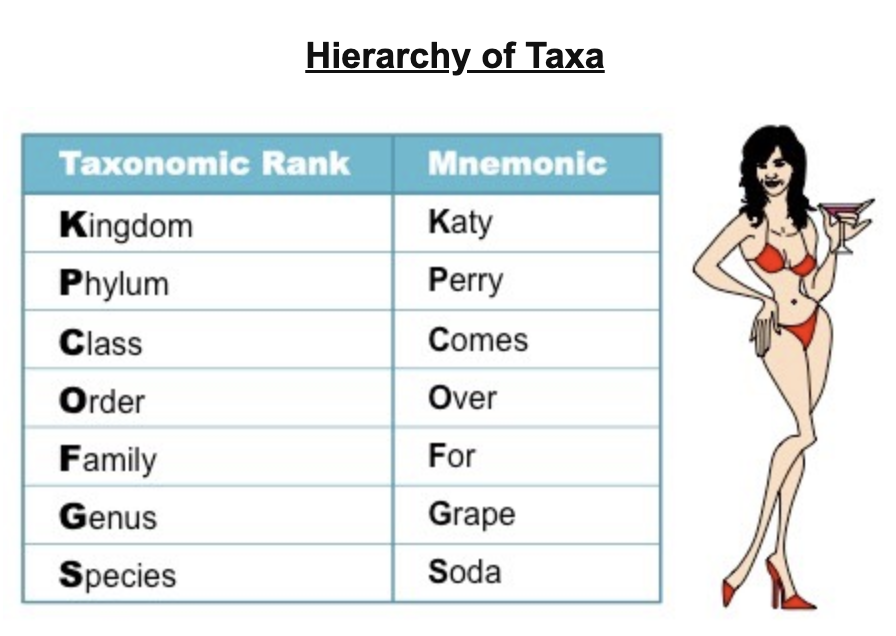
What is common descent?
• All life forms descend from a common ancestor
• New species arise by transformation of existing ones
• Trees, not ladders
—> Darwin put forward the idea of common descent, started using trees rather than ladders to show diversity of life
What is a speciation event?
When an ancestor splits into two different species.
What are cladistics?
• Method of classifying organisms (or groups of organisms) based on shared, derived (new) characteristics
• Developed in 1950s
• Based on data (fossil, anatomy, molecular, etc..)
• Evolutionary analysis
What is a clade?
• Group of organisms including common ancestor and all descendant species (living and extinct)
• Basic evolutionary units in cladistics
• Ex: Amphibians, reptiles, birds, mammals —> descend from common ancestor (four-limb vertebrate, or tetrapod)

What is a cladogram?
• Visualization of evolutionary relationships between species or groups based on shared new traits
• Species that share a more recent common ancestor are more closely related.
—> Visual representation – does not describe whole evolution, just visualization of relation between xyz species
—> Nodes are where the lineage shared a common ancestor at a certain point
—> The way you place the species tells you about how closely related the species are on an evolutionary time scale
—> In this example, humans are more similar to rabbits than to lizards, frogs, and fish.
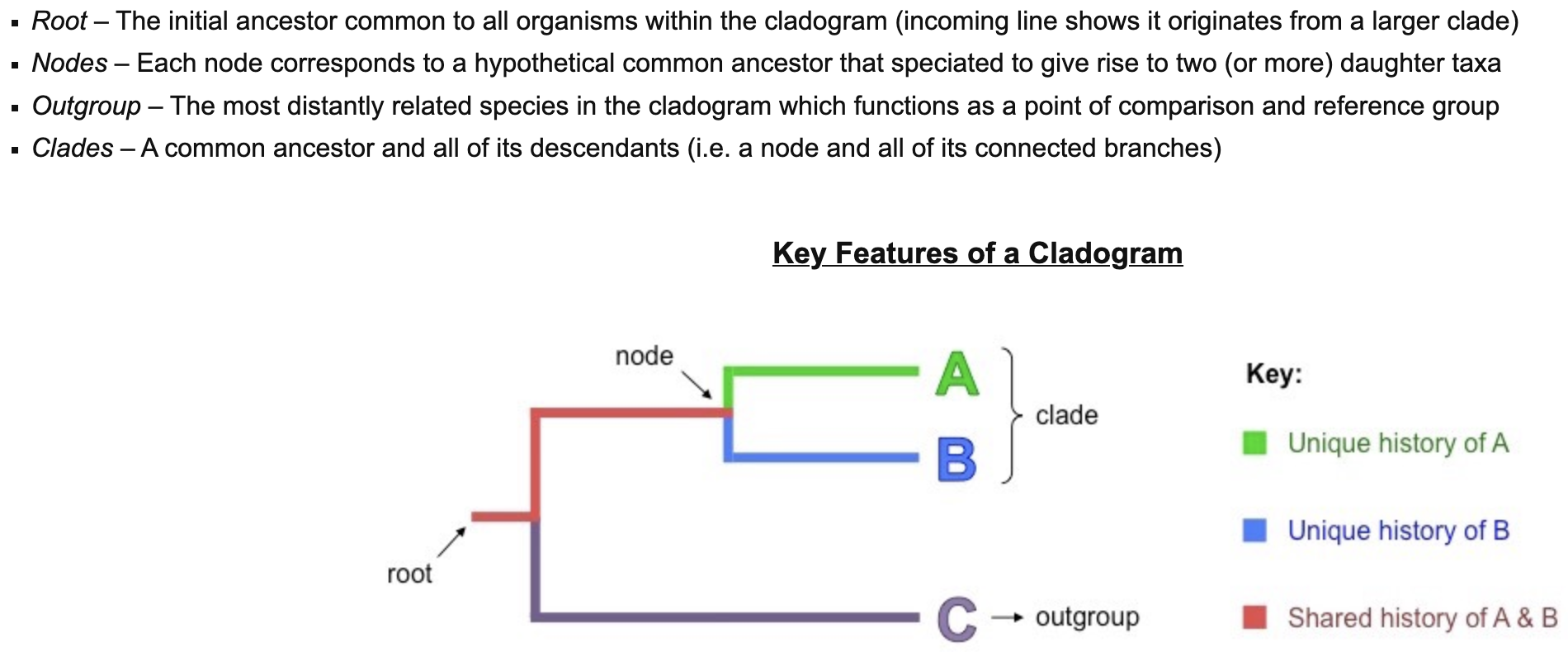
What are evolving traits?
• New traits evolved once and are inherited by all descendants (unless lost)
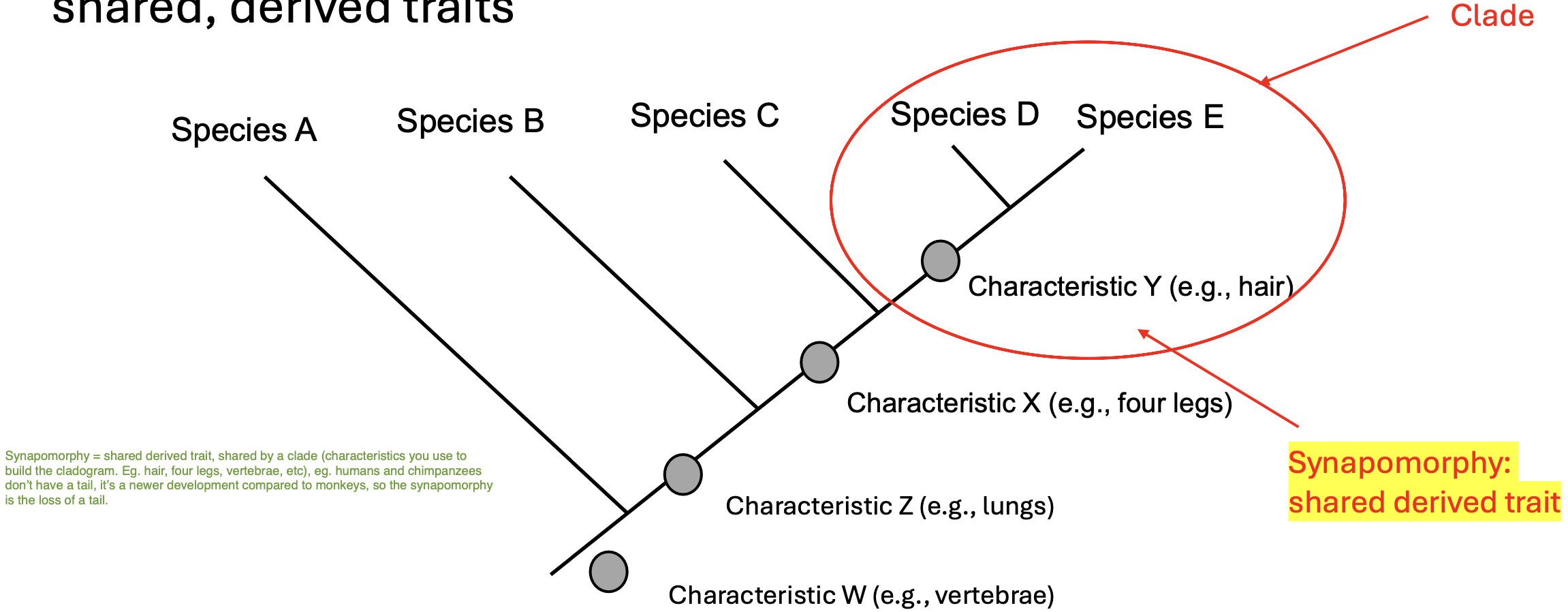
What is synapomorphy?
Shared derived trait, shared by a clade (characteristics you use to build the cladogram).
Eg. hair, four legs, vertebrae, etc.
Eg. humans and chimpanzees don’t have a tail, it’s a newer development compared to monkeys, so the synapomorphy is the loss of a tail.
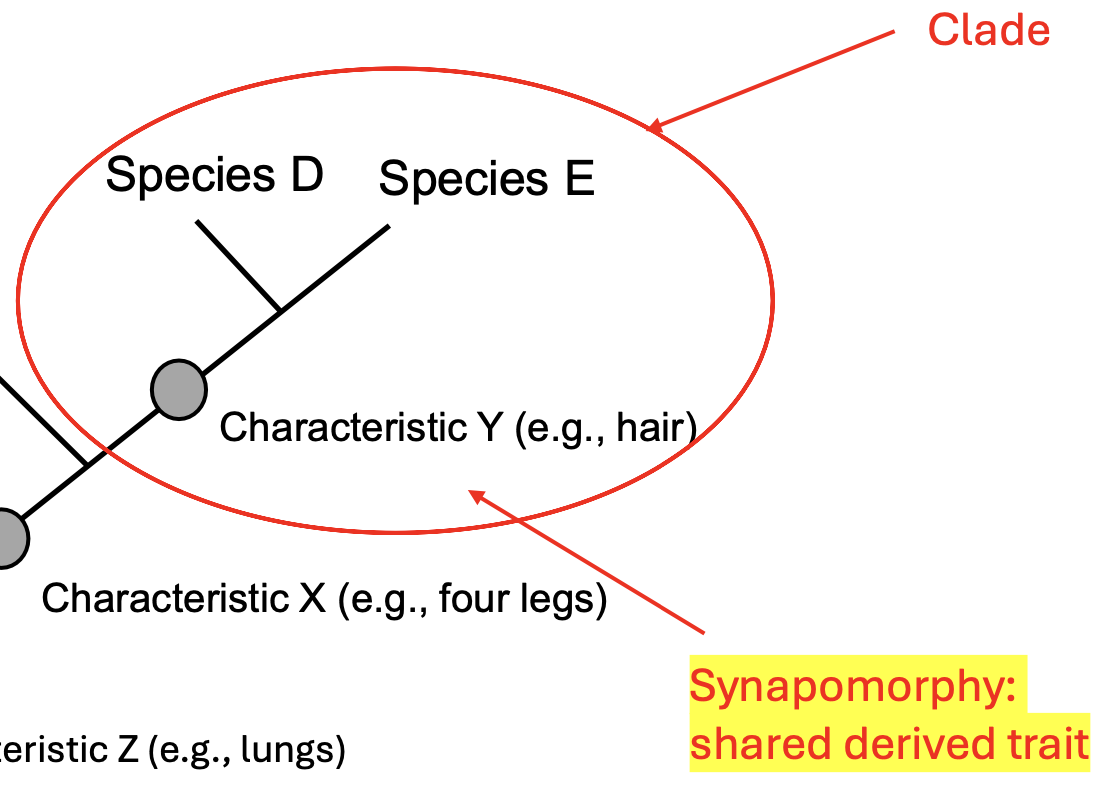
What is autapomorphy?
Derived in a single species
Eg. obligate bipedal locomotion in humans compared to other apes – only humans walk on two legs compared to other apes
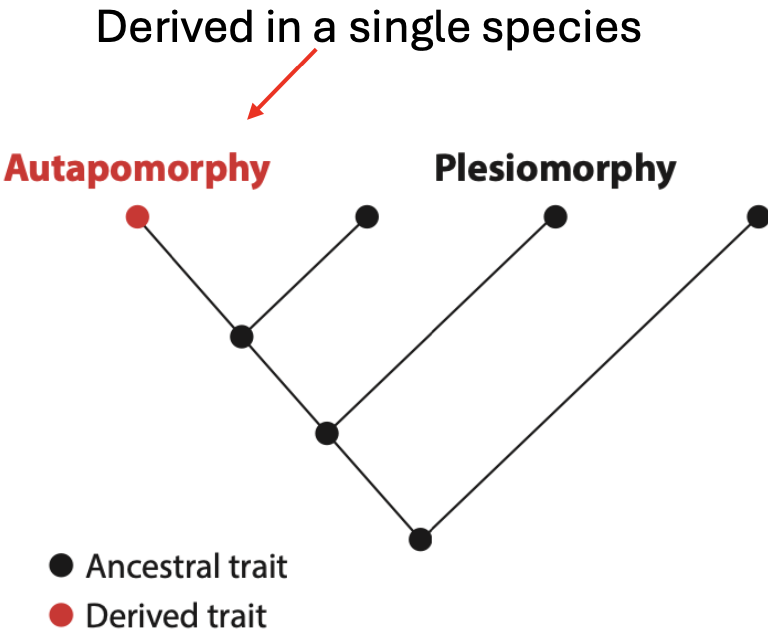
What is plesiomorphy?
Shared trait not specific to group being studied.
Eg. lactation in humans as mammals is a shared derived trait in mammals relative to non-mammalian vertebrates
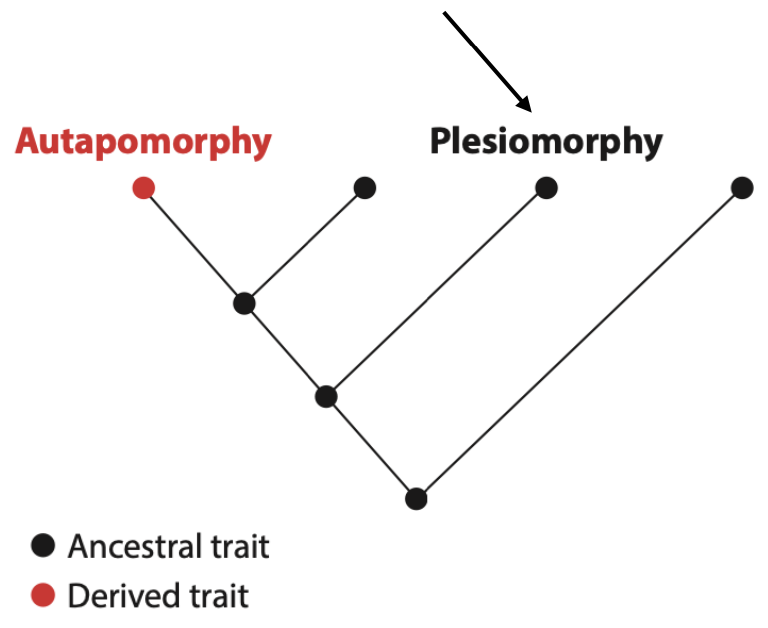
What are two types of relatedness?
Homology
Homoplasy
What is homology?
• Term introduced by anatomist Richard Owen in 1843:“Same organ in different animals under every variety of form and function”
• Trait inherited from common ancestor
• Criteria to determine homologous traits: position, development, composition
Eg. tetrapod forelimb (same set of bones in humans, whales, lizards, birds)
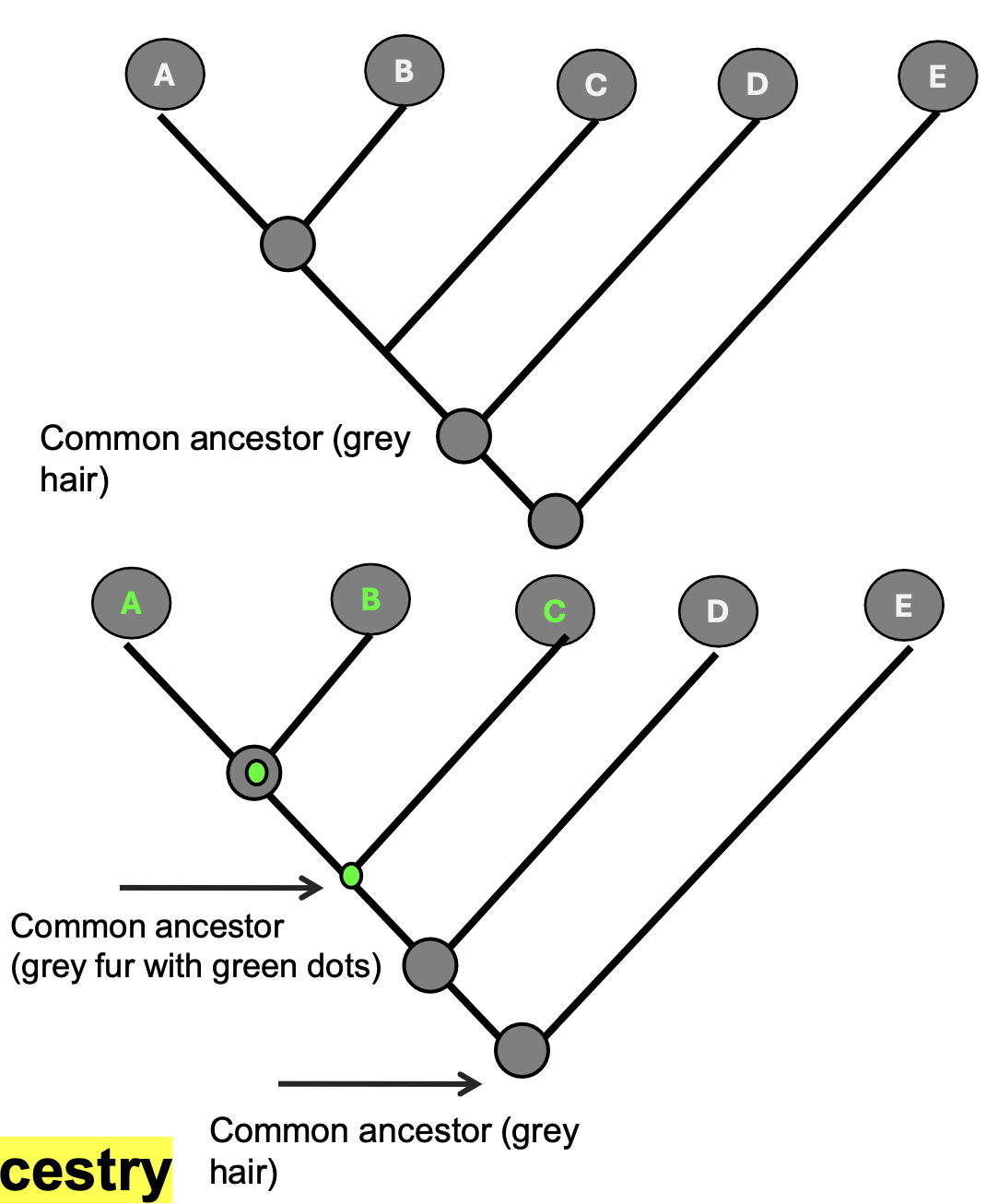
What is homoplasy?
Opposite of homology, similar trait in different species, but not due to common ancestry
• Evolved independently in unrelated species
• Homoplastic traits may arise from similar selection (environmental) pressures, or functions
• Most parsimonious explanation (fewer number of evolutionary changes)
Eg. wings in bats and birds. They evolved independently, not related to each other from an evolutionary perspective.
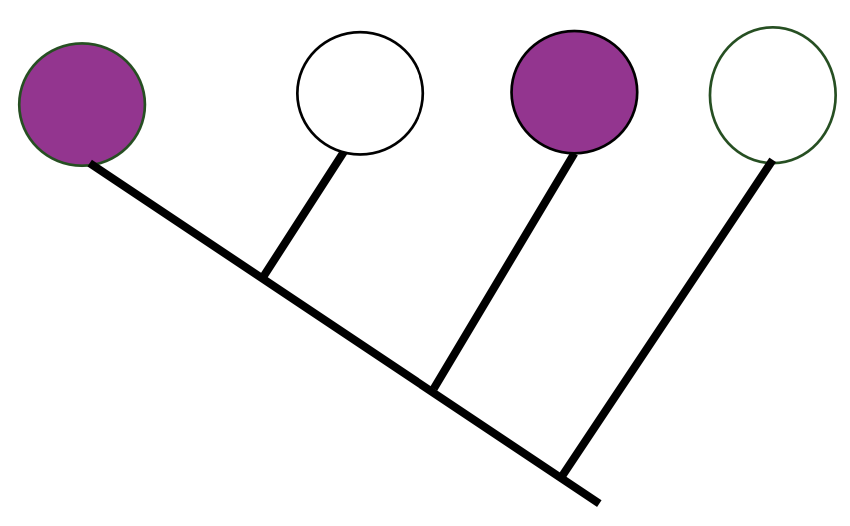
Give examples for why the character state is context-dependent.
• E.g., lactation is a primitive trait in humans relative to mammals
• E.g., lactation is a shared derived trait in mammals relative to non- mammalian vertebrates
What is an outgroup?
• Species or group that is closely related to, but not part of, the group of organisms that are studied (the ingroup)
• Functions as reference point to determine which traits are primitive, which traits are derived
• Roots the cladogram
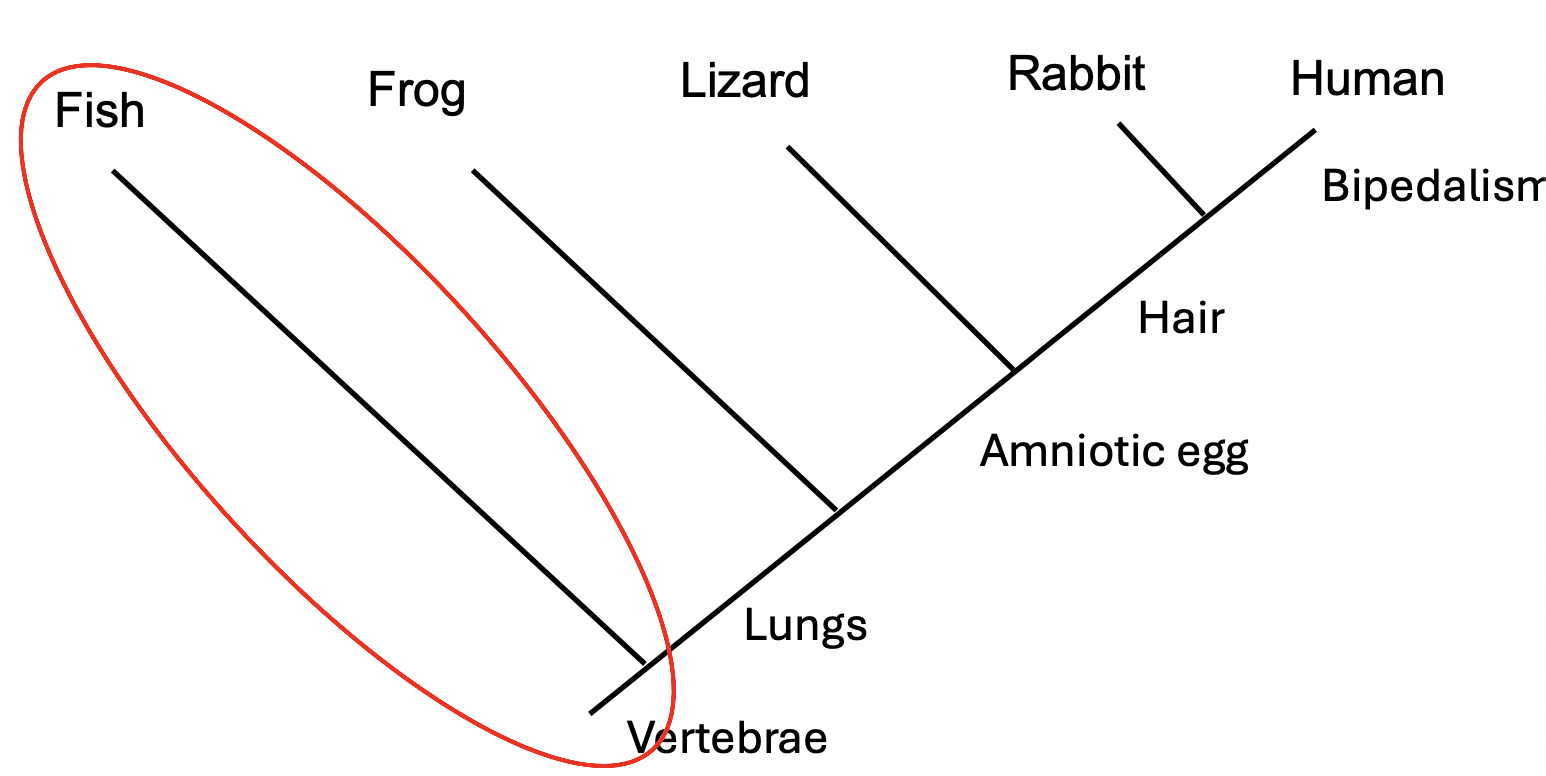
Why do we (re)construct phylogenies?
• Organize and classify the natural world
• Infer the evolutionary history and function of traits
• Build a framework to explain why we are the way we are today
What is the comparative method?
Use of studies on multiple, related species to analyze the evolutionary history and adaptive function of a trait.
What is the comparative method used for?
• To share traits and their evolutionary origin
• To understand trait function and adaptation
• To reconstruct evolutionary trajectories
Cross-species comparison
Cross-cultural comparison
Phylogenetic comparison
What does adopting a broader comparative approach do?
• Important to understand evolution of traits by homoplasy (analogy)
• Allows testing evolutionary hypothesis about trait function
